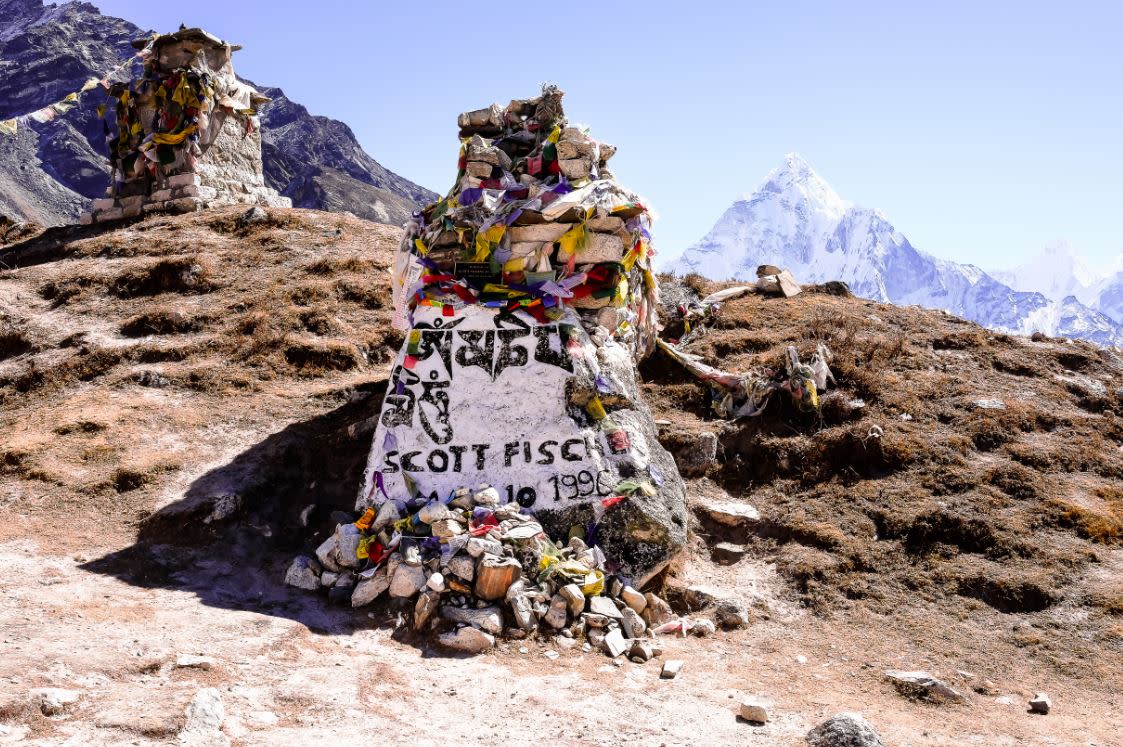How Many People Have Died On Mount Everest? Here’s Everything You Need To Know

It’s in our nature as humans to want to explore and venture out to the ends of the earth. From skydiving and scuba diving to climbing the highest mountain in the world, adventure is a natural state of human curiosity, and rightfully so as there is still so much we don’t know about our planet. Perhaps this is why, every year, thousands of people are called to Mount Everest, one of the world’s highest and most famous mountains totaling a stunning 29,032 feet above sea level. This once-in-a-lifetime experience is certainly at the top of many adventurers’ bucket lists, despite the many risks that are involved. And though we have a natural inclination to venture into unknown and exciting territory, the dangers of mother nature come to play, resulting in serious injuries and even death while exploring nature’s terrain.
While adventure brings a sense of excitement and even purpose to most, there’s always a tragically alluring factor surrounding the risk of life and death, where in most cases, our explorative personalities can get the better of us. In this instance, the tragically alluring factor of climbing the tallest mountain in the world has resulted in a puzzling amount of deaths. So with that being said, how many people have actually died climbing the tallest mountain in the world? Ahead, we’ve broken down the statistics of deaths, what makes this climb so dangerous, and everything else you need to know about climbing this skyrocketing mountain.
Where Is Mount Everest And How Do You Get There?
A part of the Himalayan mountains, Mount Everest sits along the border between Nepal and China. The peak of the mountain is shared by both countries, however, the most well-known summit route is in Nepal. To get to the mountain, climbers usually fly out from Nepal’s capital, Kathmandu to the small mountain town of Lukla. Known for being one of the most dangerous airports in the world, Lukla airport has a short runway, poor visibility, and high winds, making the excursion to get to Mount Everest just as risky as climbing the actual mountain itself with dozens of accidents and fatalities reported there.
How Many People Have Died On Mount Everest?
At least 310 people have died on Mount Everest, with numbers slowly rising every year. The first death was recorded in 1953, which means that four to five people have passed each year since. And though Everest always remained a famous part of adventurers’ bucket lists, not many people attempted to climb it until the 90s when commercial trips started to make their way into traveling there.
On April 25th, 2015, the single deadliest day for climbing Everest, a 7.8- magnitude earthquake took the lives of 19 people. Tragedy struck again on April 14th, 2014 when an avalanche took the lives of 16 Nepali climbing guides. Ever since, the two days have gone down in history and remain a critical point to climbers deciding whether or not they want to make the trip.
What Kills Most Climbers While Climbing Everest?
On average, the causes of death while climbing Everest are due to mountain sickness, falls, avalanches, exhaustion, exposure to harsh environmental conditions, and hypothermia. Believed to be the leading cause of death while climbing, mountain sickness and exhaustion take the cake, including cardiac arrest, strokes, and even minor injuries that can gradually get worse over time if not treated. If a climber is subject to feeling fatigued or simply just falling under the weather, errors are certainly bound to happen as well resulting in potential falls and or climbing mishaps.
How Long Do Climbers Survive In The “Death Zone”?
Referring to the section of the mountain above 8,000 meters, the death zone is typically the area where the oxygen pressure is extremely low, resulting in an unsafe environment or humans to stay long without having an extra supply of oxygen. According to experts, it’s not recommended to stay more than 16 to 20 hours as other factors other than oxygen can come to play. Being exposed to high winds that can cause hypothermia, frostbite, and snow blindness is extremely high and often result in death.
Do More People Die While Ascending Or Descending Mount Everest?
Surprisingly, more deaths happen while descending than ascending Everest. Due to extreme fatigue, complacency, and harsh weather, more accidents are prone to happen. According to a study conducted in 2006, more than half the deaths that occurred on Everest happened during the descent down. New claims are stating however that climbing the mountain is now responsible for a number of fatalities. In context, It’s estimated climbing the mountain takes around six weeks while descending the mountain takes only a couple of days, but overall all whether you’re going up or down, the dangers of Mount Everest remain either way.
Climbing the tallest mountain in the world surely has exciting factors involved, especially ones that involve accomplishing a major life-breaking exploration moment. However, as we continue to the world’s elements, should the list of deaths for climbing the world’s tallest mountain stop future adventurers from making the trip themselves? Or should the enticing nature of exploration have no limits to one’s sense of curiosity? What do you think? Let us know in the comments below!

